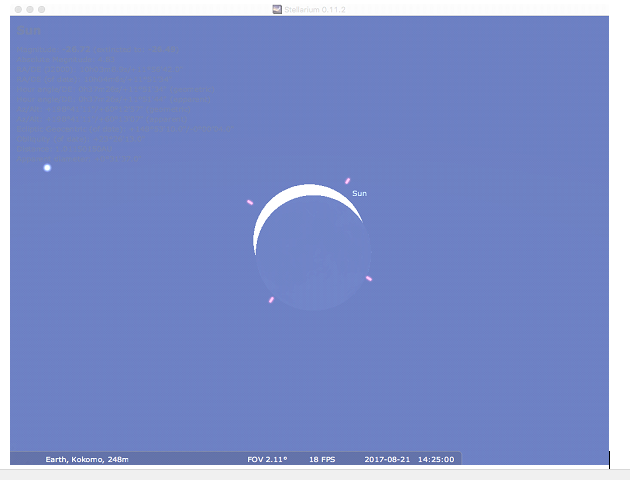Last Updated on August 16, 2017 by cassnetwork
As students return to school, a rare and beautiful natural phenomenon will help kick off the school year. On Monday, August 21, a solar eclipse will race across the U.S., from Oregon to South Carolina in a fleeting 90 minutes. This is the first total solar eclipse in the lower 48 states since 1979 and the first coast-to-coast eclipse since 1918. There certainly wasn’t Twitter or Facebook in 1979, but now you can expect numerous posts in your feed from across the country as people share their eclipse experiences.
From Kokomo, the moon will first start to cover the sun at 1 p.m. The deepest part of the eclipse will be at 2:25 p.m. when just shy of 90 percent of the sun will be covered by the moon (see below). The eclipse will end at 3:50 p.m. If the skies cooperate, sunlight will be reduced from a bright, sunny day to about the intensity you experience in the shade on a sunny, cloudless day at deepest eclipse. The eclipse will certainly be noticeable, but no place in Indiana will experience totality this eclipse. To observe that you will have to travel out of state – see the maps on https://eclipse2017.nasa.gov.
Our eyes are too sensitive and fragile for us to stare at the sun safely – eclipse or not. The easiest way to view the eclipse safely is with eclipse glasses. The lenses of these paper or plastic framed glasses will be so obscuring that unless you are looking at something as bright as the sun, you won’t see anything at all. Pick glasses that are compliant with the ISO 12312-2 standard. Other ideas for viewing the sun safely are to build a pinhole camera or reflect an image of the sun off a mirror in an envelope where you have cut a small hole in the envelope. Be sure to look down in the shade of a tree during the eclipse. Some rays of sunlight can pass between the leaves, each such path acts as its own pinhole camera. During the eclipse, trees will create myriad, shimmering images of the sun in eclipse.
If you were to simply sit in one place and wait for a total solar eclipse to happen, you would have to wait, on average, about 375 years. Hence, people travel to see a total solar eclipse and eclipse day will see many Americans on the road – adjusting their plans as some places have a cloudy forecast perhaps while others appear more promising. Whether you are traveling for the eclipse or staying in town, enjoy this happy accident that we can experience eclipses at all. The sun is vastly larger than our moon, but also vastly further away in just the right proportion that both our moon and the sun appear about half a degree on the sky. In the great expanse of space, the moon’s shadow will sometimes reach us – be sure to take the time to greet it.
If the skies do not cooperate for us here in Kokomo, try a livestream of the eclipse from https://www.nasa.gov/eclipselive for example. Looking further down the road, we will get a chance to see totality here with the eclipse of April 8, 2024 – the northern edge of the narrow band of the umbra of our moon’s shadow will pass right over IU Kokomo.
The greatest extent of the eclipse from Kokomo. About 90 percent of the sun will be covered by the moon. The star to the left is Regulus, in the constellation Leo. Venus will be to the right of the moon and sun.
 Patrick Motl is associate professor of physics at Indiana University Kokomo.
Patrick Motl is associate professor of physics at Indiana University Kokomo.






